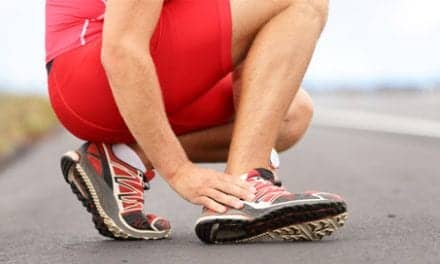Exercise is powerful medicine for physical and mental well-being, but harnessing its benefits has been a challenge for everyday people during the COVID-19 pandemic.
Thomas M. Best, MD, PhD, FACSM, professor of orthopedic surgery at the University of Miami Miller School of Medicine and research director of the UHealth Sports Medicine Institute, leads a call to action for a return to safe exercise during the pandemic, in a statement published recently in Current Sports Medicine Reports, an American College of Sports Medicine journal.
“This pandemic has limited, curtailed and dramatically altered people’s ability to sustain physical activity. Many haven’t exercised for months due to lockdowns, weather, safety issues, illness, and more.”
— Thomas M. Best, MD, PhD, FACSM, former president of the American College of Sports Medicine, a former Olympic athlete and today’s team physician for the University of Miami Hurricanes and Miami Marlins professional baseball team
A Guide for the Rest of Us
The statement, authored by Best as well as sports medicine colleagues from across the United States, aims to address and overcome the challenges so Americans can return to or sustain physical activity safely.
There are multiple guidelines on sports in the era of COVID-19 but they focus on elite athletes, including college and professional athletes, according to Best.
“Until this paper, there hasn’t been anything out there for everyday people, including those who exercise regularly and those who don’t but should,” he adds, in a media release from the University of Miami Health System, Miller School of Medicine.
The authors point to scientific evidence showing that too little or too much exercise can impact physical and mental health. For example, there are diseases of inactivity, including obesity and hypertension. Exercising moderately for 30 to 60 minutes most days of the week can both prevent and mitigate the effects of chronic disease and improve physical and mental health, as well as enhance immune function.
Overtraining, on the other hand, can have short-term detrimental effects on the immune system and therefore diminish one’s ability to fight off the common cold and other illnesses.
At the right amount for an individual, physical activity is an incredibly powerful medicine to fight COVID-19 and other diseases, according to Best.
“Studies continue to mount showing that exercise has implications even for longevity, with exercisers living an average 3 years longer than non-exercisers.”
— Thomas M. Best, MD, PhD, FACSM
One of the challenges in making exercise recommendations is pinpointing a “sweet spot,” at which exercise does the most good and no harm.
“We don’t know what the precise dose is, yet and it may be different for everyone,” he continues. “We know, however, that no exercise is detrimental to the immune system, moderate exercise enhances the immune system and too much exercise does the immune system more harm than good.”
Among the messages to primary care and other providers during the pandemic is to recommend exercise, but in a way that patients who might be unfit can and will sustain recommended amounts.
The Call to Action Includes the Following
- Encourage people who are well to start or continue moderate physical activity, including cardiovascular and strength training, for 150 to 300 minutes a week.
“The greater concern is for those who haven’t exercised in recent months. Some of those people might have one or two chronic diseases, like hypertension, obesity, or diabetes. So, their return to physical activity and sports is a little trickier in terms of how providers should prescribe the exercise. If you go to your physician and he or she says exercise 30 minutes a day 4 or 5 days a week, that doesn’t help a lot of people who are looking for more specifics. And as we come back from this pandemic and a period of physical inactivity, I think it’s even going to be more challenging.”
— Thomas M. Best, MD, PhD, FACSM
It is important, for example, that patients know they do not have to do the whole 30 minutes in one session. They can break up daily exercise into two 15-minute sessions or three 10-minute sessions and get about the same benefit, Best continues, in the statement.
- For people to exercise indoors or outdoors safely, they should wear masks around others and maintain 6 feet of distance. This is particularly important in group exercise activities to slow viral transmission.
- Especially people at high risk for coronavirus exposure should refrain from exhaustive exercise and overtraining. And people who are returning from a period of inactivity, should not aim for a personal best in their first sports event, according to Dr. Best.
“We don’t want to wear down our immune systems because we know the immune system plays a key role in trying to fight off any kind of illness, including viruses. Overtraining is defined by the individual. The goal is to optimize your immune system with optimal training, sleep, nutrition and hydration,” Best advises.
- Innovative strategies, like wearable technologies, can help people get back to and stay with regular physical activity.
- Telemedicine works well in certain settings, and providers could consider telemedicine visits when assisting people getting back to regular physical activity. Telemedicine may be useful, in particular, for populations vulnerable to the COVID pandemic.
It is important to get people to exercise despite pandemic-related challenges, and this call to action paper starts that conversation, Best concludes.
[Source(s): University of Miami Health System, Miller School of Medicine, Newswise]
Related Content:
Pandemic Plump
Prolonged Training Restrictions Heighten Injury Risk
Health Exercise Program Engage-PD Shows Promise for Keeping Parkinson’s People Active





